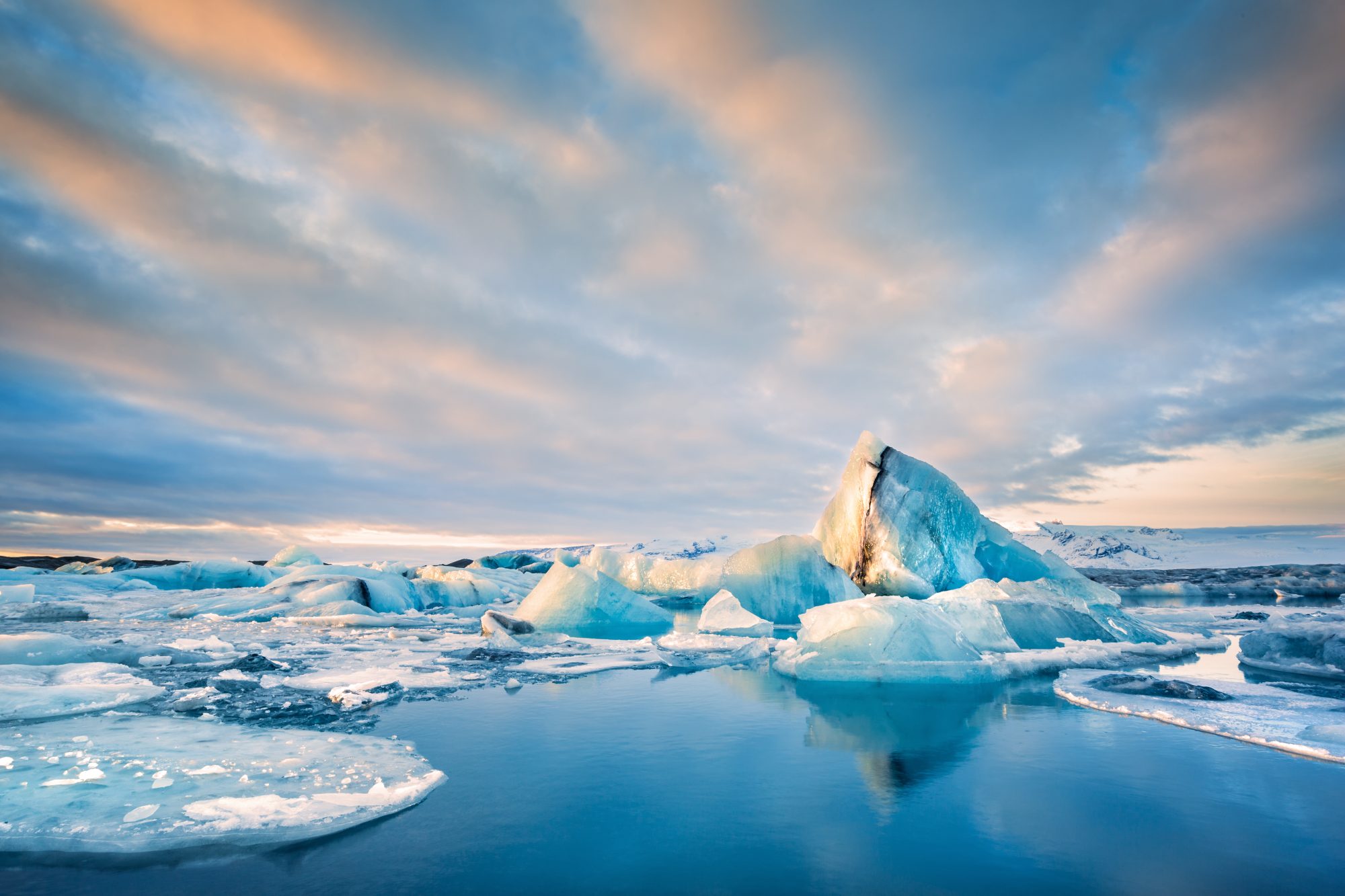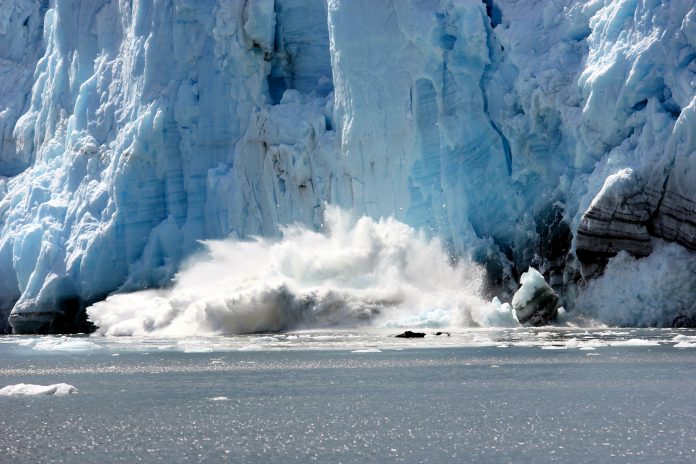Melting snow and ice, seeping between Arctic glaciers, puts even thick glaciers at risk of sudden collapse from glacial movement
Scientists from the University of Berkely, fear that many glaciers will collapse by the end of the century, drastically raising sea level and inundating coastal cities and island nations. With climate change slowly but surely heating the planet, glaciers are at a higher risk than ever before of collapse says the new model of glacial movement.
Thicker glaciers are found to be more vulnerable than previously imagined
Published last week in the journal The Cryosphere, the new model incorporates the effects of meltwater that infiltrate to the base of a glacier and lubricates its downhill flow. The physical model predicts that the most vulnerable glaciers are the thickest ones that have a history of faster flow, even when that rapid flow is periodic.
The most vulnerable glaciers are the thickest ones
“The model suggests that thick and fast-flowing glaciers are more sensitive to lubrication than thin and slow glaciers,” said Whyjay Zheng, a postdoctoral fellow in the UC Berkeley Department of Statistics.
“The data from Greenland glaciers support this new finding, indicating that those fast and thick glacier beasts might be more unstable than we thought under global warming.”
The Arctic and Antarctic have warmed more than the rest of the world, March 2022 saw the record high temperatures of 70 degrees Fahrenheit above normal in the Antarctic, with parts of the Arctic being more than 60 degrees warmer than average.
The warmer weather causes meltwater lakes to form on many glaciers, these lakes can punch through to the bottom of glaciers by a process called hydrofracture or drain to the bottom through crevasses nearby.
There is a new understanding of how glaciers speed up or slow down
Glaciologists have already seen that the speedup and slowdown of glaciers are related to what’s happening at the front of the glaciers, where the ice merges into the ocean and meets warmer water.
Observations show that for many such marine-terminating glaciers, when the fronts melt, or calve, into the ocean, the remaining glaciers tend to speed up. When the fronts advance into the ocean, the glaciers slow. As a result, the focus has been primarily on what’s happening at the glacial terminus.
“In Greenland, the glacier’s speed seems to be mostly controlled by the terminus position: If the terminus is retreating, then the glacier will speed up; if the terminus is advancing, the glacier will slow down,” Zheng said.
“People think this is probably the primary reason why the Greenland glaciers can speed up or slow down. But now, we are starting to think there’s another and maybe quicker way to make glaciers slow down or speed up — basal lubrication.”
Scientists say that a specific phenomena creates a “positive feedback loop”
Zheng and the team have mortified the common model of glacial flow to take into account the meltwater effects and the testing predictions of the model against glaciers in Greenland.
The prediction that thicker, faster-moving glaciers are more prone to thinning and discharge into the ocean, fit with observations of glacier flow over a 20-year period, from 1998 to 2018.
“Basal lubrication creates a positive feedback loop,” Zheng said.
“The faster glaciers are more likely to respond faster to basal lubrication, and the following speedup makes them more prone to future lubrications. For example, if a glacier is flowing 3 kilometers per year, and basal lubrication suddenly happens, it will react so fast that you can see the fluctuation of the speed, probably just a few days later, compared to another glacier that would be flowing at 100 meters per year.”

Improved glacial monitoring can change standards in publishing
This study shows that thick, fast-moving glaciers around the Arctic and Antarctic need to be monitored more frequently just as they are currently monitored for changes at the terminus.
Better ways of measuring basal lubrication are also needed.
Zheng further said: “If the glacier has a potential to be disrupted in a short time and drain a lot of the ice into the ocean, perhaps within a year or two, that could be something we have to worry about.”
Zheng plans to test the new model on some of the marine-terminating glaciers in Antarctica. Meanwhile, through an online platform called Jupyter Book, anyone can run Zheng’s data through the model equations and Python code to reproduce his results – a publishing standard he hopes will become commonplace for big data research in the future.











